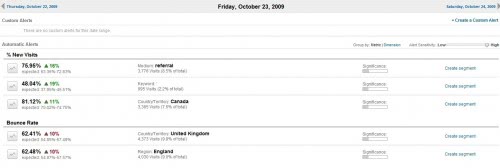A sample document for Web Marketing SEO Strategy/Plan
Developed by
Bojja Balasubrahmanyam
1) Executive Summary:
This strategy and web marketing plan includes a search engine strategy to get the customer placed at top positions in the search engines online. This strategy is particularly tailored according to your time and financial constraints/budget. This comprises of selecting and focusing on the most appropriate key words suiting your business, paid listings campaigns management, improving and maintaining search engine rankings, directory listings, increasing link popularity, writing web copies (Articles & PRs) and various other marketing tactics & strategies to boost traffic and ROI growth.
Results of all these will be measured by industry standard web analytics tools & software. It will help in reporting our success and to focus and strategize in a better way.
2. Industry Analyses:
SWOT Analysis:
Strengths:
Weaknesses:
Opportunities
Threats:
Analysis of the Company, Customers, Competitors and regulatory environment.
3. Target Market:
Showcase the current market demographics:
This will reveal customer’s income, interests, psychological mindsets, trends, activities, needs & preferences based on age groups and geographical areas.
Marketing Strategy and Objectives:
Marketing Objective and Mission Statement:
To be given by the concerned authority.
• General Strategies to reach objectives and fulfill mission.
On Page Optimization (Organic Listings):
• Website preliminary Analysis.
• Keyword Research.
• Identifying Keywords for particular pages.
• Basic Design and Page layout.
• Website verification for validation of source codes (HTML & CSS).
• Site internal Link Analysis. (Linking of pages with other pages)
• Broken Link Check.
• Check for non-crawler friendly portions in website. Flash, Java Script, frames.
• Website Navigation and flow corrections – Search engine friendly.
• Website Architecture Suggestion and corrections – SE friendly.
• Title & Meta Tag Optimization.
• Anchor Text and Image Tag Optimization.
• Check for unique content. Remove plagiarism.
• Content Optimization –
1. Keyword Density, Keyword Proximity & Prominence.
2. Header Tag Optimization.
3. Website XML Sitemap development and Search Engine Syndication.
• Determine a minimum page size according to the content and info provided in the pages.
• Website Usability Analysis, suggestion & Correction.
Off Page Optimization Website Promotion:
• Directory Submissions.
• Site External Link analysis.
• One Way Link Building.
• Two Way Link building – Reciprocal Links.
• Three Way link building.
• Submitting site to niche directory website.
Articles writing & submissions to top Article Directory.
• Creating and Publishing Ezines.
• Press Releases creation and top PR website Submissions.
Specific Marketing strategies and plans suiting needs. (Organic & Inorganic)
• Blog Creation & Maintenance.
1. Blogger, Typepad, Server Based.
2. Custom developed blogging.
3. Opens Source blogging software like Word press.
• Viral Marketing
1. Blog Marketing.
2. Promotion of website products and services in relevant online Forums and Chat groups.
3. Promotion website products and services in Online Groups and communities.
• Social Media Optimization & Marketing.
1. Book-marking sites.
2. Profile Sharing sites, community portals & websites.
3. Websites of genre My Space etc.
4. Local Business Listings
• Search Engine Marketing.
1. Google Adwords - Pay Per Click
2. Yahoo Search Marketing
3. MSN Ad center
• Product Listings in Shopping & Auctions Sites.
1. Froogle, Bizrate, mySimons.
2. Yahoo Shopping auction, Amazon, shopping.com.
• Affiliate Marketing.
1. Content and niche sites, including product review sites.
2. Network Websites.
3. Coupon and rebate sites that focus on Sales promotions
4. Blogs & RSS.
• Content Syndication.
1. Website Content RSS & Atom Feeds.
2. RSS Directory Submission.
3. Blog RSS syndication.
Email Marketing.
1. Server based tools.
2. Mailworkz, Lyris ListManager etc.
• Others – Offers, surveys, contests, exchanging ads – banner, text etc.
• Website Analytics & Reporting.
1. Website Traffic Tracking and prediction.
2. Identifying Leads and Weak areas.
3. Analysis and Reporting Tools like Web Trends, Omniture, and Google Analytics.
5. Budgets, Implementation, and Time Span:
• Budgeting and Analysis
• Implementation
• Time Span
6. Appendices:
7. References:



